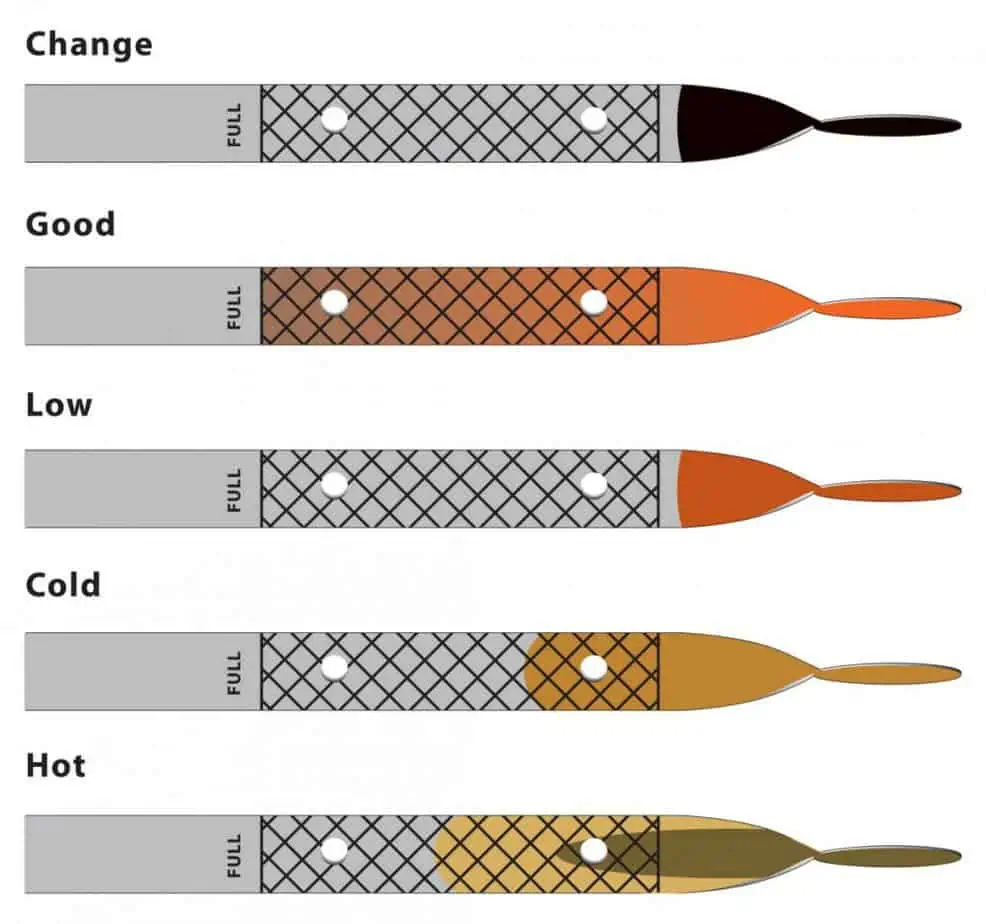Maintaining your vehicle is crucial for its performance and longevity, and one of the simplest yet most important aspects of vehicle maintenance is monitoring engine oil. The color of the engine oil can provide significant insights into its condition and whether it needs to be changed.
Understanding Engine Oil Colors
Engine oil comes in various colors, and each color can indicate different conditions. Here’s a breakdown of what different engine oil colors may signify:
- Clear or Golden Yellow: This indicates new oil. It is clean and has not been contaminated or degraded.
- Light Brown: This color suggests that the oil is still in good condition but has started to pick up some dirt and engine contaminants.
- Dark Brown: This indicates that the oil is getting old and dirty. It may still be functional, but it’s time to consider changing it.
- Black: This color means the oil is very dirty and has likely lost its effectiveness. It’s time for an oil change.
- Milky or Creamy: This is a sign of coolant mixing with oil, which can indicate a serious engine issue such as a blown head gasket.
- Reddish or Pink: This color is typically associated with transmission fluid rather than engine oil. If you find this in your oil, it may indicate contamination.
How to Check Engine Oil Color
Checking the color of your engine oil is a straightforward process. Follow these steps:
- Park your vehicle on a level surface and turn off the engine.
- Wait a few minutes to allow the oil to settle.
- Open the hood and locate the dipstick, which is usually marked with a bright handle.
- Remove the dipstick, wipe it clean with a lint-free cloth or paper towel.
- Insert the dipstick back into its tube, then remove it again to check the oil level and color.
What to Do Based on Oil Color
Once you’ve assessed the color of your engine oil, here’s what you should do next:
- Clear or Golden Yellow: No action needed; your oil is in good condition.
- Light Brown: Monitor the oil; consider changing it soon based on your vehicle’s maintenance schedule.
- Dark Brown: Plan for a change within the next few hundred miles.
- Black: Change the oil immediately to ensure your engine remains healthy.
- Milky or Creamy: Seek professional help immediately, as this indicates potential engine damage.
- Reddish or Pink: Have your vehicle inspected for leaks or contamination issues.
Understanding the color of your engine oil is a vital part of vehicle maintenance. Regular checks can help you catch problems early, ensuring your engine runs smoothly and efficiently; Always refer to your vehicle’s manual for specific recommendations regarding oil changes and maintenance practices.
For further guidance, consider consulting a professional mechanic, especially if you notice any unusual oil colors or signs of contamination. Keeping a close eye on your engine oil can save you from costly repairs and extend the life of your vehicle.

